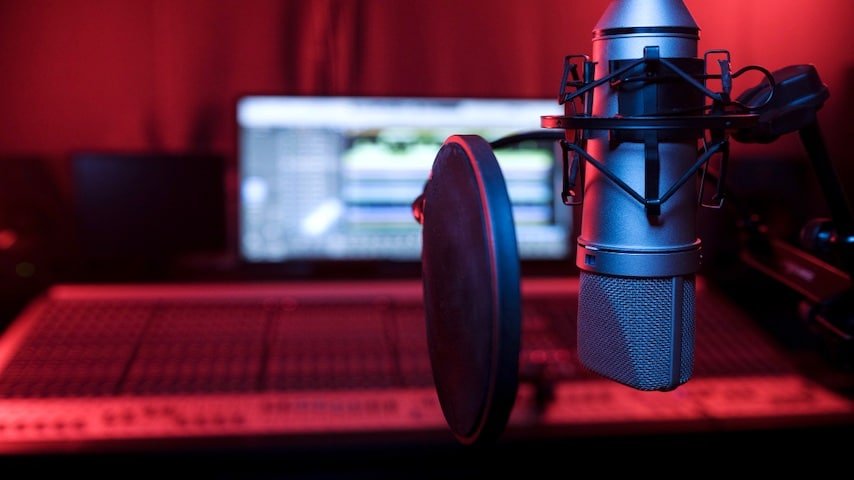The world of audiovisual media is vast and diverse, and one aspect that plays a significant role in its success is dubbing. Dubbing refers to the process of replacing the original voice track in a video or film with a new, translated voice track in another language. In this article, we will explore different types of dubbing, their production processes, and the importance of choosing the right dubbing style to provide a seamless viewing experience for the audience.
Lip-synced Dubbing
Lip-synced dubbing is the most common and complex form of dubbing. It involves replacing the original voice track with a new one that matches the lip movements of the actors on screen. This type of dubbing aims to provide a seamless viewing experience for the audience, making it appear as if the actors are speaking the translated language. The process of lip-synced dubbing involves several steps:
- Script Adaptation: The original script is adapted and translated to fit the target language, ensuring that the translated dialogue aligns with the actors’ lip movements. This can be a challenging task, as different languages have unique sentence structures, grammar, and expressions that need to be considered.
- Casting: Voice actors are selected based on their ability to match the original actors’ vocal characteristics and expressions. This is crucial for maintaining the authenticity and emotional impact of the performances.
- Recording: Voice actors perform the translated dialogue while watching the video, adjusting their performance to synchronize with the on-screen lip movements. This requires great skill and precision, as even slight misalignments can create a disjointed viewing experience.
Time-synced Dubbing
Time-synced dubbing, also known as rhythm-sync dubbing, focuses on aligning the translated voice track with the original dialogue’s timing. While it may not perfectly match the actors’ lip movements, the goal is to maintain a natural flow and pacing of the dialogue, providing a comfortable viewing experience for the audience. The process of time-synced dubbing involves the following steps:
- Script Adaptation: Similar to lip-synced dubbing, the script is adapted and translated to match the timing of the original dialogue. This involves adjusting the translated dialogue’s duration to fit within the same time constraints as the original language.
- Casting: Voice actors are chosen for their ability to convey the right emotions and tone for the characters. While matching the original actors’ vocal characteristics may not be as crucial in this method, it is still essential to find the right voice actors who can bring the characters to life.
- Recording: Voice actors record the dialogue while keeping the original dialogue’s pacing and rhythm in mind. This can be challenging, as different languages may require different pacing or intonation to sound natural.
Get The Perfect Lip Sync
Unravel the perfect voice for every type of dubbing with GoLocalise’s diverse talent.
Non-synced (Wild) Dubbing
Non-synced or wild dubbing is a more straightforward method that does not require the voice track to match the actors’ lip movements or the timing of the original dialogue. This type of dubbing is often used for off-screen narration, documentaries, or when the on-screen visuals do not require precise synchronization with the audio.
The production process for non-synced dubbing is relatively simpler than the other two types:
- Script Adaptation: The script is translated without the need to adapt for lip movements or timing. This allows for a more straightforward translation process that focuses on accuracy and cultural relevance.
- Casting: Voice actors are selected based on their ability to portray the characters or narrate effectively. In non-synced dubbing, the emphasis is on the voice actor’s ability to convey the right emotions, tone, and clarity rather than matching the original actors’ voices or lip movements.
- Recording: Voice actors record the translated dialogue, focusing on delivering a high-quality performance without needing to synchronize with visuals. This allows for greater flexibility in the recording process, as the actors can concentrate on their vocal delivery without the constraints of lip movements or timing.
The Impact of Different Dubbing Styles on the Audiovisual Industry
Each dubbing style has its advantages and disadvantages, and the choice of method depends on various factors, including the type of content, target audience, and budget. Understanding the strengths and weaknesses of each style can help content creators and voice over agencies make informed decisions when localizing their audiovisual productions.
Lip-synced Dubbing:
Pros:
- Provides a seamless viewing experience for the audience
- Enhances the emotional connection between the audience and the characters
- High-quality production can lead to increased acceptance and appreciation of localized content
Cons:
- Can be time-consuming and costly due to the complexity of the process
- May require multiple revisions to achieve perfect synchronization
- May result in slight changes in the original dialogue to fit the lip movements
Time-synced Dubbing:
Pros:
- Offers a more natural flow and pacing of the dialogue
- Less time-consuming and costly compared to lip-synced dubbing
- Allows for greater flexibility in the translation process
Cons:
- May not provide a completely immersive viewing experience due to minor lip-sync discrepancies
- Requires voice actors to prioritize timing over lip movements, which can be challenging
Non-synced Dubbing
Pros:
- Simplified production process compared to other dubbing styles
- Ideal for content that does not require precise audio-visual synchronization
- Allows voice actors to focus on their performance without the constraints of lip movements or timing
Cons:
- Not suitable for content where on-screen visuals demand accurate synchronization
- May result in a less engaging viewing experience for certain types of content
Conclusion
The art of dubbing plays a pivotal role in fostering cross-cultural connections and breaking down language barriers, enabling audiovisual media to reach a wider audience. As our world becomes increasingly interconnected, the demand for high-quality localization services continues to grow. Voice over agencies like ours must be well-versed in the different types of dubbing and their production processes to ensure that we can meet the diverse needs of our clients and consistently deliver top-notch results.
Each dubbing style—lip-synced, time-synced, and non-synced—offers unique benefits and challenges that must be carefully considered to select the most suitable approach for a given project. Factors such as the type of content, target audience, budget, and cultural sensitivities play a crucial role in determining the optimal dubbing technique. By remaining up-to-date with the latest developments and trends in the dubbing industry, we can refine our services, adapt to new technologies, and provide innovative solutions to localization challenges.
Moreover, it’s essential to recognize the importance of collaboration and teamwork in the dubbing process. From script adaptation and translation to casting and recording, every stage requires the coordinated efforts of skilled professionals, including translators, scriptwriters, voice directors, and voice actors. By fostering an environment that encourages open communication, creativity, and mutual respect, we can enhance the overall quality of our dubbing projects and create a more enjoyable viewing experience for audiences worldwide.
In addition to understanding the intricacies of various dubbing styles, it’s vital for voice over agencies to stay informed about the ever-evolving landscape of the audiovisual industry. As new formats and platforms emerge, we must be prepared to adapt our services and develop innovative strategies that cater to the unique demands of these mediums. This commitment to continuous learning and improvement will not only help us remain competitive in the marketplace but also contribute to the growth and advancement of the global audiovisual industry.
In conclusion, the art of dubbing is an invaluable tool in bridging cultural divides and making audiovisual content accessible to diverse audiences. By embracing the nuances of different dubbing techniques and continually refining our skills and knowledge, voice over agencies like ours can play a pivotal role in the ongoing expansion and globalization of the audiovisual media landscape. As we continue to forge new connections and foster greater understanding through the power of dubbing, we reaffirm our commitment to excellence and our dedication to enriching the lives of audiences around the world.












